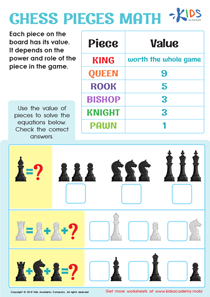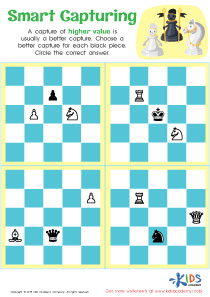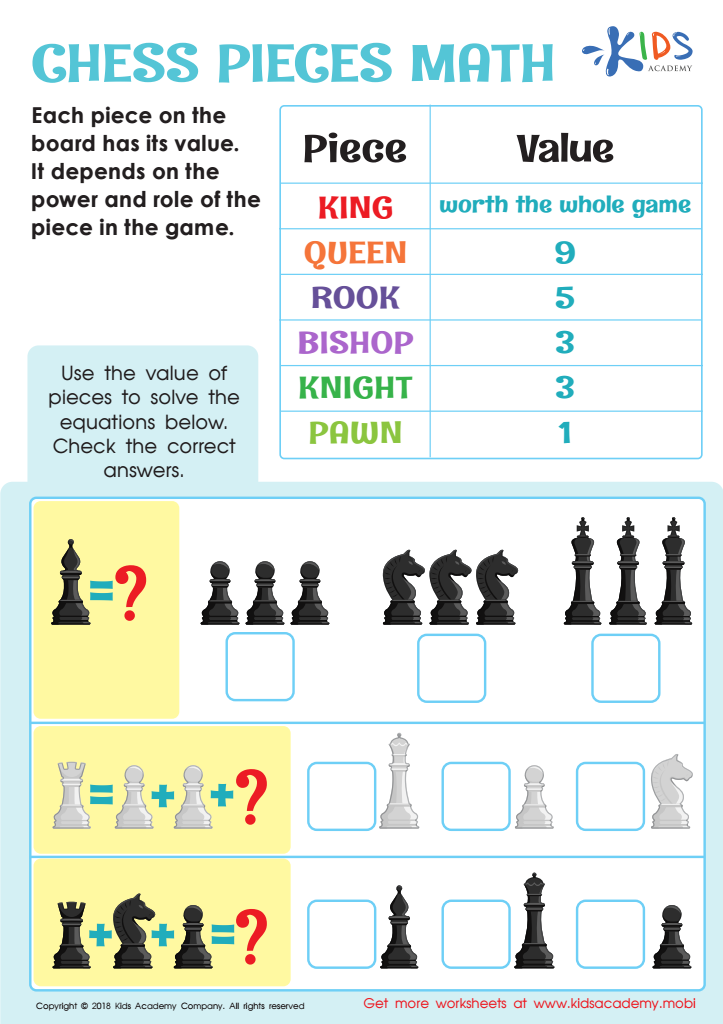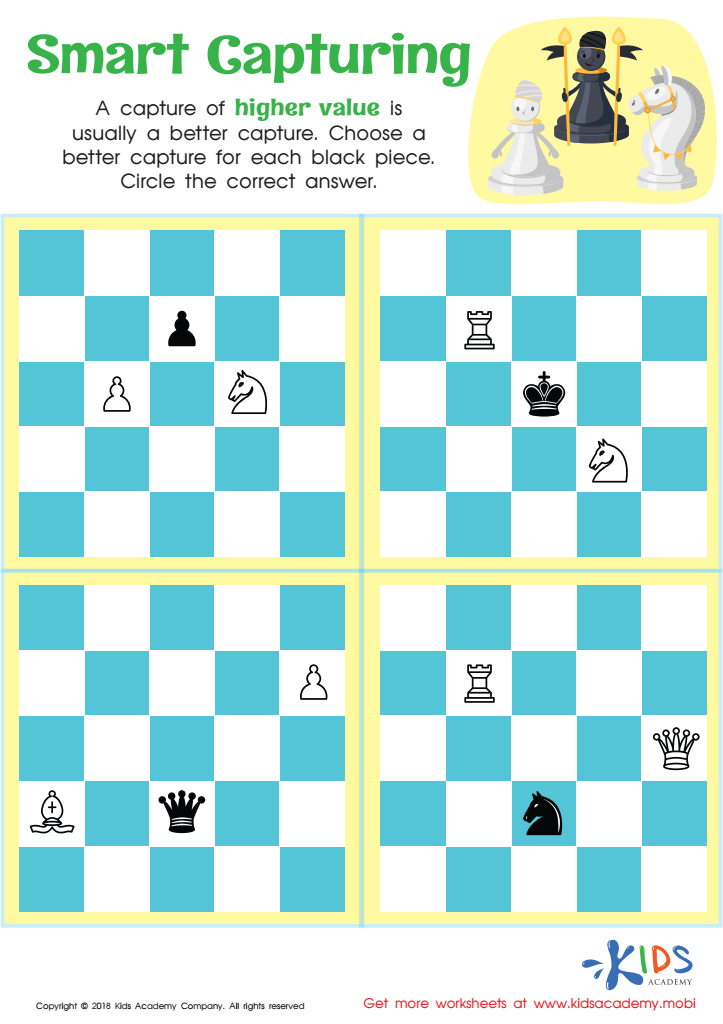Power and Value of Pieces - Lesson for Preschool, Chapter - Pieces - How They Move and Capture
In the "Power and Value of Pieces" lesson, preschool students embark on an engaging journey to understand the fundamental concepts of chess, focusing on the distinct movements and values of each piece. This lesson, nestled within the "GAME BASICS" unit and the broader "Pieces - How They Move and Capture" chapter, is designed to introduce young learners to the intriguing world of chess in a fun and accessible manner.
Through activities like "Chess: Power and Value of Pieces," children will discover the unique ways in which chess pieces such as the pawn, rook, knight, bishop, queen, and king can move and capture on the board. This knowledge is crucial as it forms the foundation of strategic thinking and decision-making in chess.
The "Chess Pieces Math Worksheet" integrates basic math skills with chess, teaching children how to calculate and compare the value of different pieces. This activity not only reinforces their understanding of each piece's significance but also hones their mathematical abilities.
Furthermore, the "Smart Capturing Worksheet" encourages students to apply their newly acquired knowledge in practical scenarios, teaching them when and why to capture opposing pieces strategically. This fosters critical thinking and problem-solving skills.



-
Activity 1 / Chess: Power and Value of Pieces
-
Activity 2 / Chess Pieces Math Worksheet
It might alarm your students a bit to learn that chess has more than a little math involved. Each piece on the chessboard has its own value attached to it. The value of each piece varies according to the power and role of the pieces in the game. For example, the king is valued at worth the entire game; the queen is valued at 9 points etc. In the worksheet, your child is required to use the value of the pieces to solve the equations at the bottom of the printout.
-
Activity 3 / Smart Capturing Worksheet
Chess revolves around careful strategizing, smart thinking, and calculated moves. In a situation where a player is in the position to make two different captures of enemy pieces, the player must go for the capture that will fetch a higher value. For instance, forgoing capturing pawn to capture a knight. In this worksheet, your children must choose which capture is better for each black piece. Ask them to circle all the correct answers.





